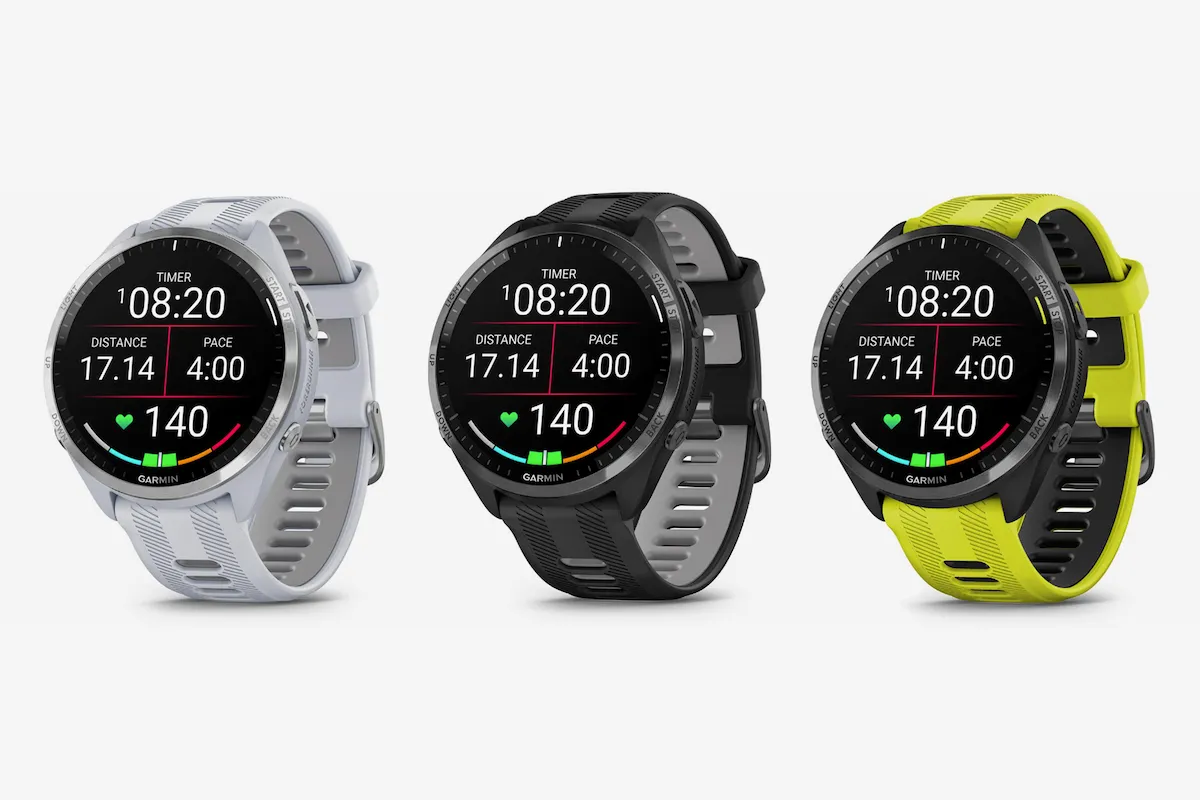It seems a day doth not pass without Garmin releasing a new watch. Today’s instalment is the Garmin Forerunner 965.
By this stage of the Forerunner’s evolution, changes are subtle but, to be fair to Garmin, thoughtful and usable. And so it is with the 965.
Garmin Forerunner 965 review
The most significant upgrade the Forerunner 965 makes over the Forerunner 955 is hardware; in other words, the display.
Is the future AMOLED?
The AMOLED display replaces the 955’s MIP display – for those looking to unpick those acronyms, it now has Active-Matrix Organic LightEmitting Diodes rather than Memory-In Pixel – and it’s a helluva change.
The vibrancy and clarity of the data is next-level and is down to the 965’s 206,116 pixels compared to the 955’s 67,000 pixels.
On early morning misty sessions aside the Severn Channel, it proved particularly impressive, feeding back just how slowly we were running!
Battery life
The payback is that vibrancy comes at a battery cost. By default, AMOLED displays tend to be ‘off’ and are awoken by movement. It’s the same with the 965. Leave it like that and you’ll enjoy up to 23 days in smartwatch mode.
Turn the AMOLED display on permanently and you’re looking at up to a week, albeit that’s taking into account around 6-7hrs of GPS use. Personally, we prefer it on. Don’t know why. Just do. Either way, general battery life is solid.
Performance features

The most significant software change is in the Training Status widget. In the past, Garmin focused on acute load, a reflection of one week’s training.
Now, it compares acute and chronic loads, chronic being the four-week load. You’re given a ratio of acute to chronic. If the ratio’s lower than 1.0, theoretically you’re not progressing too much. Up to 1.5 and you’re progressing. Over 1.5 and you’re entering the realms of overtraining.
It’s a nifty at-a-glance feature, and if you have the 955 you can enjoy this thanks to a firmware update.
Those who enjoy dialling down into myriad running metrics now can with the 965 delivering cadence, stride length, oscillation and ground contact time.
More of the good stuff
As for features already seen in the Forerunner range, you have the full colour mapping that’s even more colourful and detailed thanks to that AMOLED screen.
You also get a full multisport profile, daily workout suggestions based on your recent data, which proved a useful feature as a heavy workload’s resulted in erratic training, and multi-satellite GPS that proved accurate in all three disciplines.
A nod to the optical-heart rate sensor, too, which is generally regarded as one of the most accurate around.
But is it worth the price? Well, if you’re seeking an upgrade from a lower-budget watch, yes.
If you have the 955, it’d be hard to justify the spend on ostensibly a clearer display.
Verdict: Impressive watch, but expensive and arguably not worth upgrading your 955.
Score: 86%
